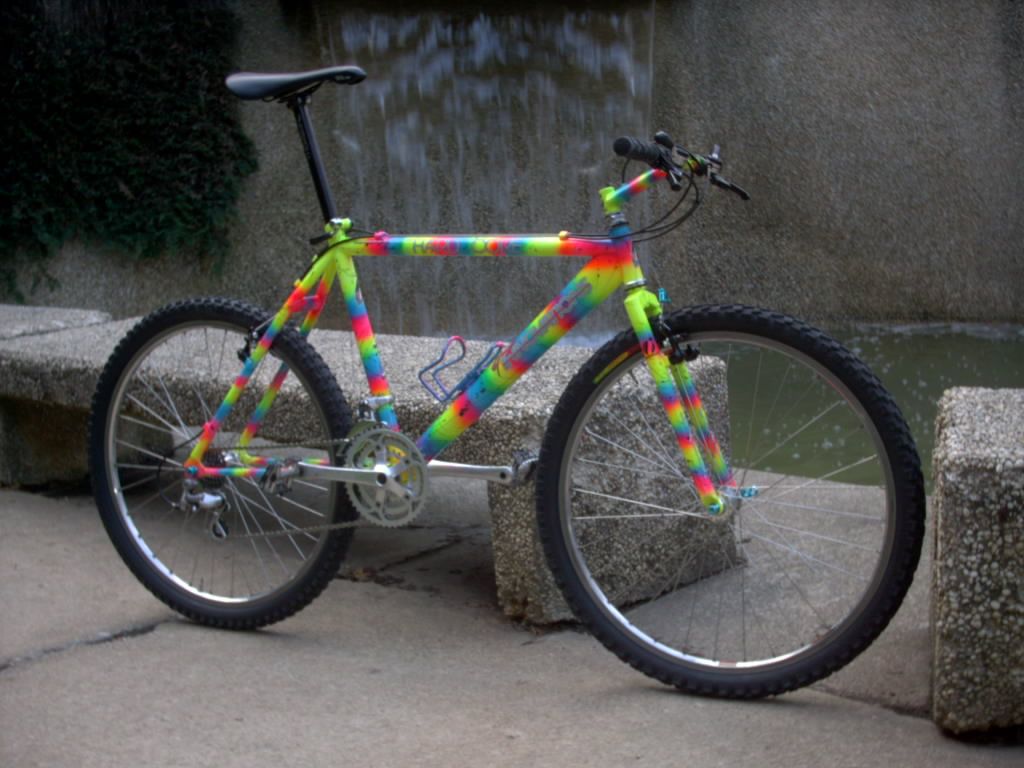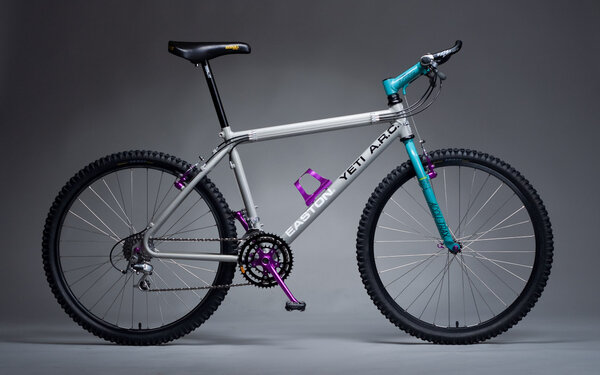bordercollie1":1nwa1a03 said:
This thread started so well and then it began to feel a bit like the Tri Talk forum.
At least I now know how the headset on a Pace worked.
It puzzled me every time I saw a Pace on here.
Thanks for the pics and explanation.
My fault in all respects, I'd been over and looked a STW.com for a short while and it obviously influenced me!
The pace was a real revelation in terms of that aheadset, why they didn't patent the idea was beyond me as it was so obviously an aheadset before it's time.
I've now got a bike with Truss forks and have been wanting to get a new stem and steerer made for that working in the same principle.
Other bikes of distinction?
Yeti Ultimate.
Started as a project by MBA to create the 'perfect bike'. The brief was to create the
ultimate bike (hence the name) that was supposed to be light, strong, stiff, manoeuvrable yet stable. The initial design didn't have the curved seatstay/chainstay junction, instead it had a standard arrangement.
This project was one of the first outside of Fisher to use the evolution headset size, it was also the birthground of the aluminium FTW stem (designed to fit the big headset). The FTW stem went on to become the Answer Attack stem that covered many bikes steering needs throughout he 90s.
It was also one of the first bikes to use the all on the top tube cable routing and used an early version of the top pull mech created using a bottom pull mech and an eyelet cable stop with the inner cable running to a clamp on the bb. This was the same as used on Trimbles (I think but tintin40 can expand), and was later used on Treks. strangely this feat was not used on the production yeti, instead it used a pulley mounted under the chainstay/seat tube junction (called the 'love junction' as the welders just
loved it's complexity!
a Love Junction yesterday.
It also featured a huge amount of mud clearance, a revelation for a west coast producer (in fact yeti experts can apparently date the frames by the distance between the rear brake bosses!)
Sadly, as with many vintage bikes of that era, it ended up being a bit heavy, a little prone to cracking and quite long in the body. But it is great for the UK due to it's mud clearance, nippy geometry and sloping TT.








